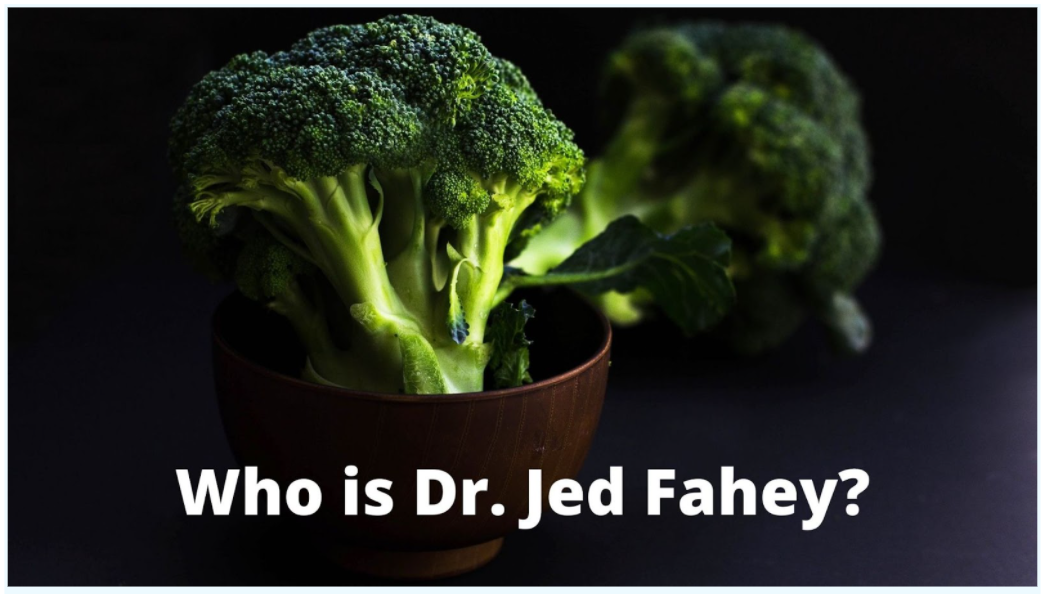Dr. Jed Fahey is a nutritional scientist with a strong foundation in plant and human nutrition as well as phytochemistry. Dr. Fahey was an Assistant Professor at Johns Hopkins Medical School, where he managed the Cullman Chemoprotection Center, a world-class research and development facility for plant-based protective agents.
Since 1993, he has held teaching positions in three departments at the Johns Hopkins School of Medicine and Public Health, where he has performed laboratory and clinical experiments, taught graduate courses, and supervised students.
He worked on agricultural biotechnology research and industrial process development for the first 15 years of his career.
Dr. Fahey “retired” in mid-2020 to devote his full time to outreach and education activities such as podcasts, writing, and public speaking. He has adjunct posts at JHU and other institutions and may be available to consult for socially responsible food and supplement firms and charities.
Works
His study focuses on the activation of cytoprotective, anti-inflammatory, and antioxidant responses in mammalian systems by phytochemicals.
To create dietary strategies for chronic disease prevention in humans, this effort draws on components of natural product chemistry, enzymology, nutritional epidemiology, and clinical research. Many of these research focus on glucosinolates and isothiocyanates, which are largely present in cruciferous vegetables, and a nutritious tropical tree is known as the drumstick tree.
Social Media
Read more about the Dr. Jed Fahey here.
Inspiring Talks by Dr. Jed Fahey
Interview
Notable quotes
- “…you would get the highest levels of glucoraphanin from just eating broccoli seeds. [But] there’s also a possibility of getting an overload of erucic acid…”
- “If you’re counting on your gut’s…your intestinal tract’s myrosinase to do all of the conversion for a supplement, you’re probably going to want to take a higher level of glucoraphanin.”
- “You know broccoli is good for you. The phytochemical Sulforaphane is a key reason — and it may deserve to be called not just “health food,” but an actual medicine.”
- “FINISH YOUR VEGETABLES!”I can hear my mother’s voice when I call to mind all the times she heckled me to clean my plate of vegetables. You may have experienced the same while growing up, and/or heard yourself saying something similar to your own kids.
- “Sulforaphane is of medical interest because of the cytoprotective (“cell-protecting”) functions that it encourages. As of now, it is among the most potent naturally-occurring inducers of cytoprotective enzymes known to science.”
- “Sulforaphane offers tantalizing hints that it may be not just “healthy,” but an actual therapeutic tool, its status as a naturally-occurring compound is something of a double-edged sword. The astronomical cost of running human trials to validate its therapeutic usefulness against specific diseases is a major disincentive for an un-patentable compound, existing in the public domain as the extract of a common plant.”
- “This is true in many parts of the world where Drumstick tree grows — always in the tropics. It looks a little like a Dr. Seuss drawing of a tree, with a strangely thick trunk topped with comparatively small patches of leaves.”
- “Those leaves are protein-rich and phytochemical-packed, and a renewable source of nutrition in many parts of the world where nutrition is not always easy to achieve. (The Moringa tree is now the official tree of the Philippines.)”
- “Despite its wide availability and its nutritious potential, Moringa is in many places thought of as a “food of last resort.” “
- “It may be one of the few foods remaining during times of famine, and so it comes to be associated with times of scarcity and want. Unfortunately, this reputation keeps it from being used to its full potential during times of plenty — when it is just as healthy as ever.”
